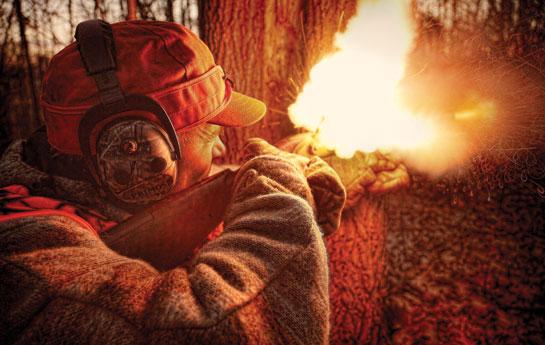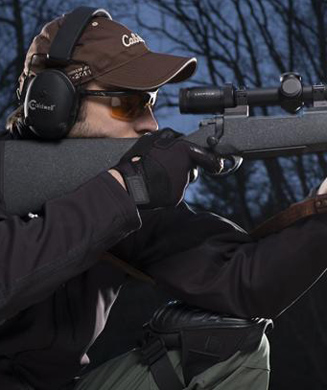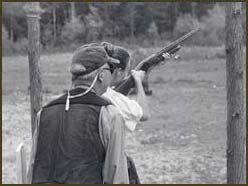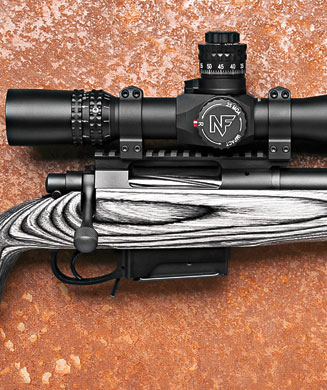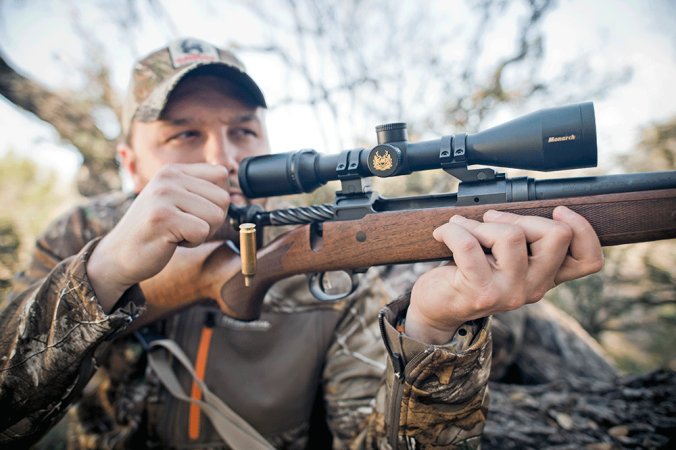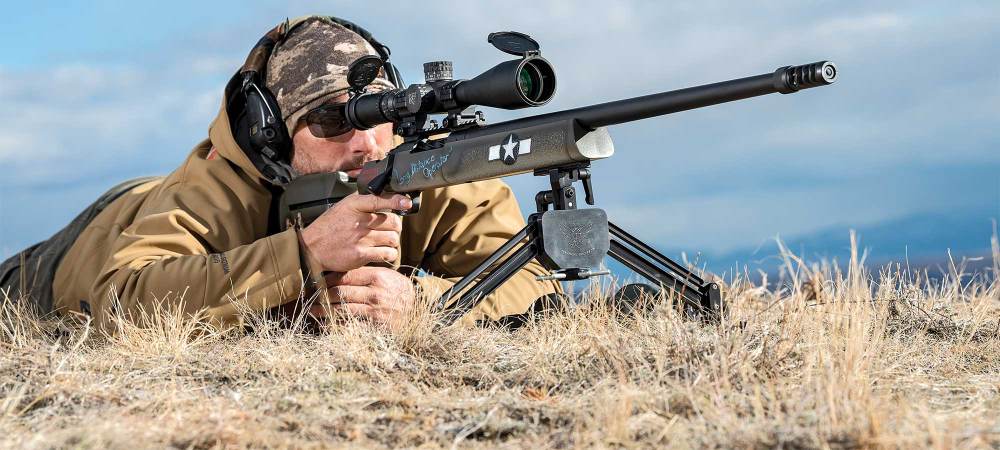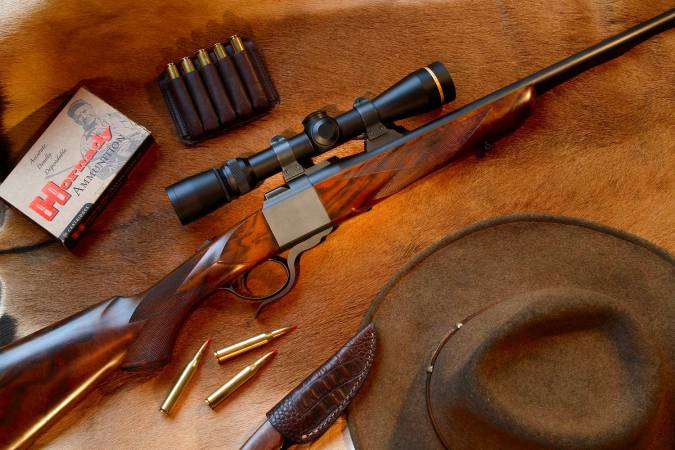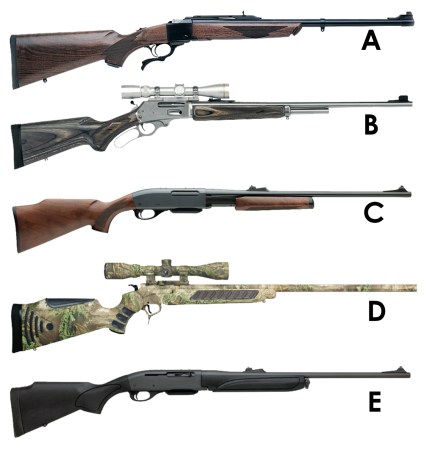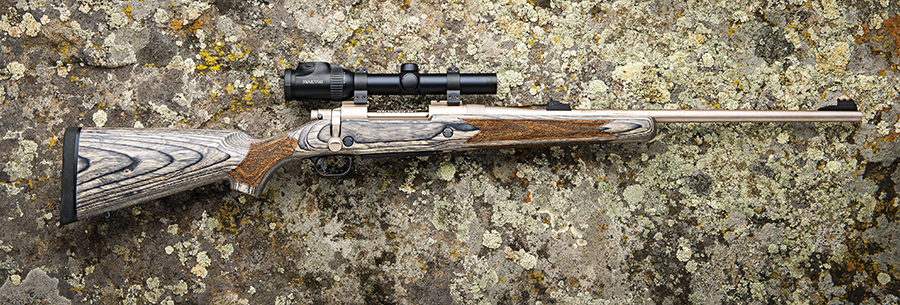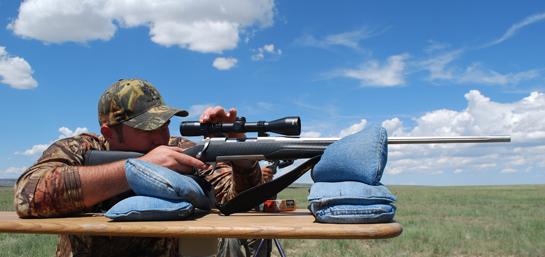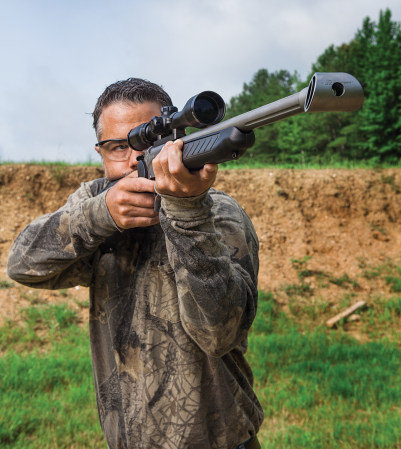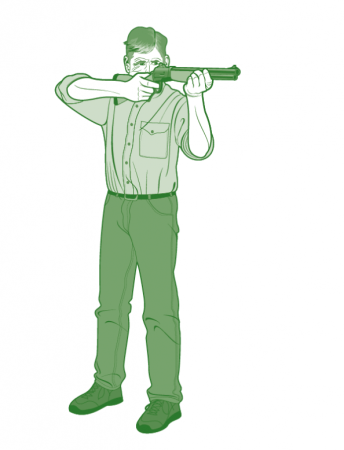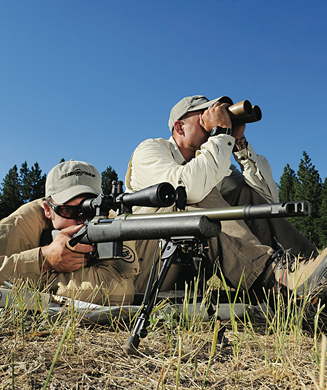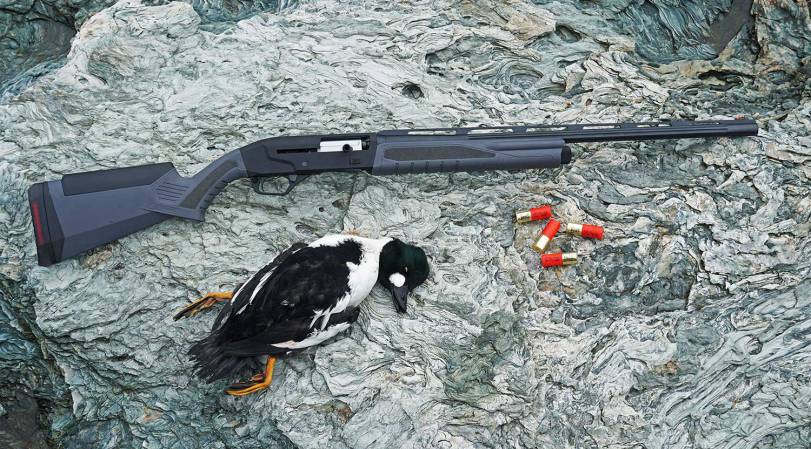We may earn revenue from the products available on this page and participate in affiliate programs. Learn More ›
Photo: Mitch Kezar/Windigo Images
Accelerating a bullet from dead still to a couple thousand feet per second (or more) in the blink of an eye equals recoil. It’s Newton’s “equal and opposite reaction” to the bullet’s launch. Rifle weight and shape play into felt recoil, but they don’t change recoil’s kinetic energy, which is a function of the rifle’s mass and rearward velocity. And although bullet speed figures into energy calculation, its contribution to rifle “slap” does not. A bullet that exits fast dumps its energy fast. An 8-pound rifle hurling a 405-grain .45/70 bullet at 1,800 fps delivers about the same recoil as a .338 Magnum rifle of the same weight firing a 225-grain spitzer at 2,800 fps. But the .338 may feel friskier.
On a kick-tolerance scale of gun-shy to gorilla, I’m on the wimpish end, painfully aware that save for a slice of rubber, all that lies between my clavicle and a measured load of explosives are brass, steel, and hardwood. Hugging a rifle has much in common with sitting on a stump over dynamite. Either practice can bring on a flinch.
**
Stock Shape**
A stock with lots of drop from comb to heel leaps up to pound your cheek. A sharp comb hikes the pain. Straight combs, with little drop and a gently rounded top, slide past your cheek. The forward-sloping comb on Weatherby’s Mark V treats you well, with recoil pushing the stock away from your face.
One rifle in my rack is a Mauser stocked just right for its iron sights. This .458 has the lively feel of an upland gun–and kicks as fast as lightning on skids. After three shots, my head throbs and my jaw goes numb. If this mule-hoofed monster didn’t point like a Rizzini and stick 500-grain solids into walnut-size groups, I’d sell it.
Short stocks are bad news when they jam your thumb into your nose on recoil. Adding a soft pad can keep that thumb at bay and also absorb shock at the butt. You’ll also want the wrist and forend to fit your hands, and texture to nix slipping in rain and snow. Svelte stock profiles that respond nimbly in your hand offer little “grip” to counter kick. But a stock too thick for a wrap of your hand will jump free on recoil.
Eye Relief
Recoil hurts most when you’re prone or at a bench, because your torso can’t rock with the hit. Shooting uphill prone can bloody your brow with a scope bite. Affix that scope with as much eye relief as you can stand. On the bench, drape folded bath towels over your shoulder to deaden kick. You’ll need a soft pad for your right elbow or you’ll skin it on the bench top.
Muzzle Brakes
Many truly powerful rifles wear muzzle brakes, which send exiting gas through vents instead of letting it explode forward. Angled vents direct gas to reduce rearward thrust. Brakes needn’t be unsightly. Texas gunmaker Lex Webernick has measured noise output with vents of various sizes and locations. His brakes are trim, relatively quiet, and seamlessly fitted. Still, brakes are not benign. While prone in dust or snow, you may trigger a tempest that can obscure the target. Even the best brakes are noisy, and a blast from the most aggressive causes concrete to crumble. You’ll have ear protection at the bench, but not always when you hunt. Hunting guides rattled by the blast by and large hate brakes. Solution: Use a brake in practice, then replace it with an unvented sleeve for the hunt. Just check to see that the point of impact is unaffected.
